Sunday Post: Visiting Laurie Lee Country in the Cotswolds
Member Update
We did it! We smashed our goal of 150 new members, and ended up 160 paid members! Welcome to all the new members! We hope you enjoy your first Sunday Post this week. In case you missed the announcement earlier this week, we will begin sharing monthly desktop wallpapers with members of the club, just another lovely little benefit for everyone.
Now, we begin the work to get our membership up to 200 paid members - once we hit 200, the Google Ads will come off Anglotopia. What a day that will be!
Here are some highlights from the forum this week:
Wallace & Gromit: Vengeance Most Fowl Reaction Thread
What are your most favorite British TV shows of all time?
Britain in 2025 - Who’s Going?
London short stay recs
Sunday Post: Visiting Laurie Lee Country in the Cotswolds
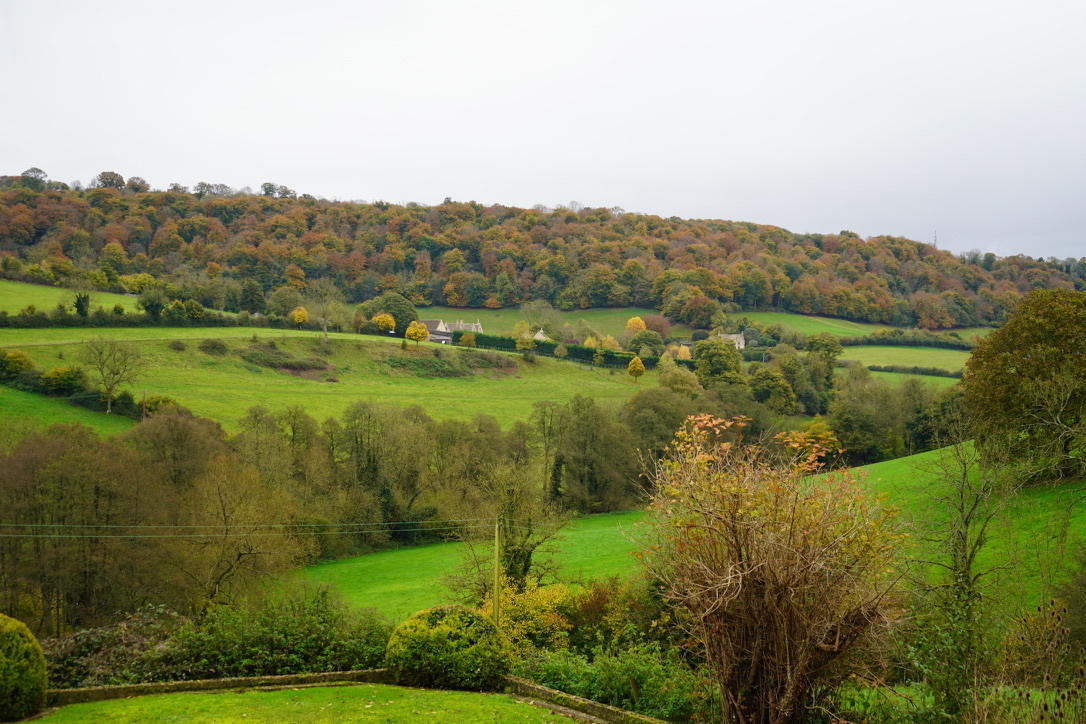
Have you ever read one of those books that was so good, it completely reoriented your way of thinking about…. everything? I had that experience when I read Cider With Rosie for the first time in 2018. I’d picked up a copy when I visited Barter Books in Northumbria, and when I returned home to Indiana, the first thing I did was open it up. And not put it down until I’d finished it. I was completely taken by Laurie Lee’s simple, beautiful stories of growing up in an England that is long gone, but simultaneously still there in some ways.
So, it was only natural that I wanted to visit the Slad Valley when I was nearby last autumn.
Laurie Lee was one of Britain's most beloved memoirists, born in 1914 in Stroud, Gloucestershire. When he was three years old, his family moved to the village of Slad, nestled in a steep-sided valley in the Cotswolds. This move and his subsequent childhood there would form the heart of his most famous work, "Cider with Rosie," published in 1959.
The Slad Valley became Lee's spiritual home, even though he would later travel extensively through Spain (which he wrote about in "As I Walked Out One Midsummer Morning" and "A Moment of War"). The valley, with its ancient cottages, winding lanes, and deep woods, was a place suspended between the old world and the new. Lee captured this transitional moment perfectly - his childhood coincided with the arrival of electricity, motor cars, and other modern conveniences that would forever change rural English life (Downton Abbey fans will appreciate that the book takes place in the same time period).
"Cider with Rosie" chronicles Lee's childhood in this changing world. The book is notable for its lyrical prose and vivid characters, from his mother, whom he portrays as a loving, somewhat scattered woman attempting to raise a large family alone, to the various village characters who peopled his youth. The title refers to a memorable moment when a girl named Rosie offered young Laurie a drink of cider under a hay wagon - though the scene itself takes up only a small portion of the book, it became emblematic of the work's exploration of innocence and coming of age in rural England.
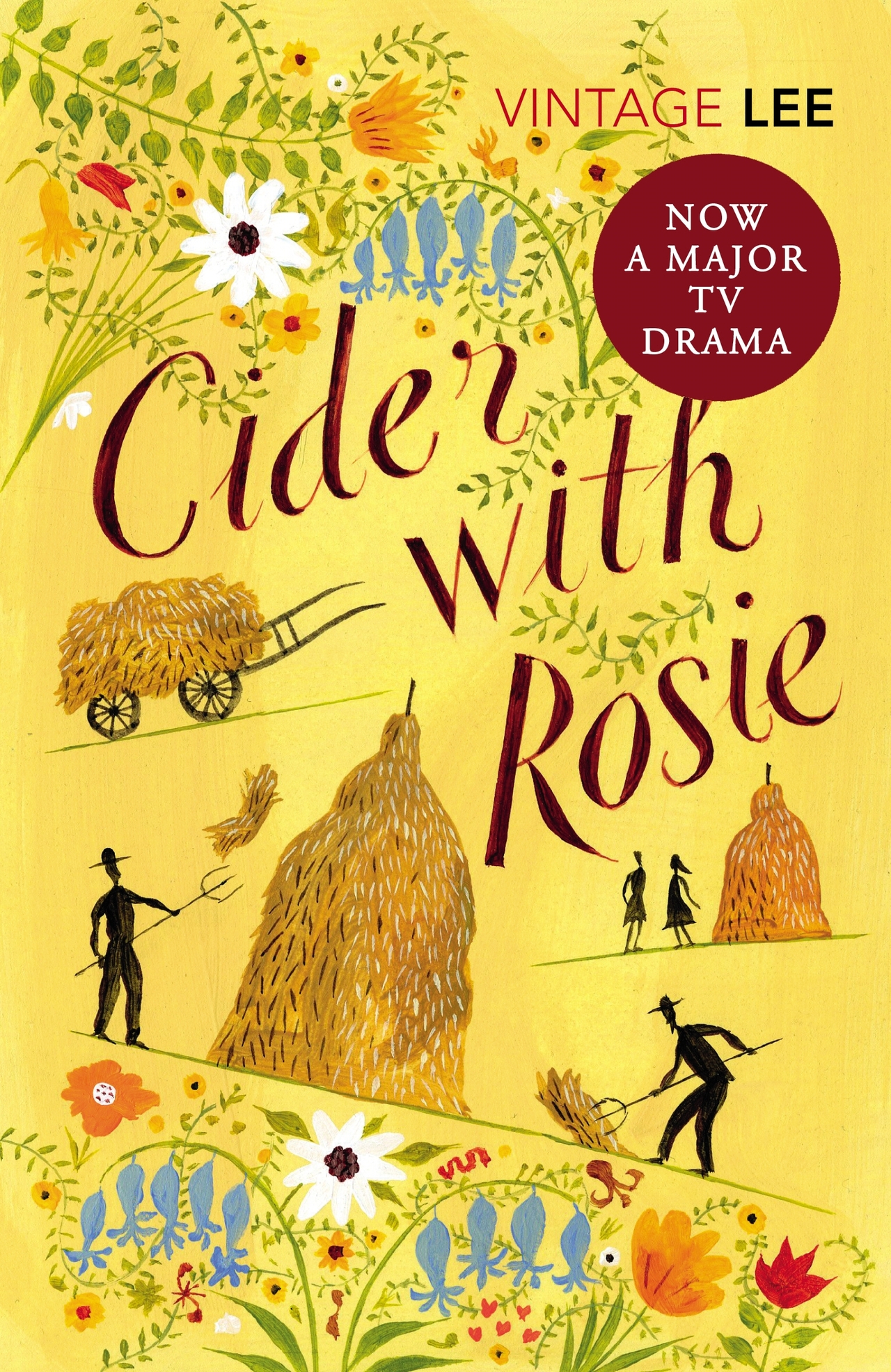
The book has become a staple of British education, particularly in secondary schools, where it's often studied between the ages of 13 and 15. Its inclusion in the curriculum stems from several factors: its accessible yet sophisticated prose style, its historical value in documenting a vanishing way of life, and its themes of childhood, community, and change that resonate with young readers.
Many British adults will recall studying the book, analyzing its descriptive passages, and discussing how Lee's memoir captures both personal experience and broader social change. The work has achieved that rare status of being both a serious literary achievement and a beloved classroom text, helping generations of British schoolchildren understand their country's transition from a rural, traditional society to a modern one.
"Cider with Rosie" has been adapted for television several times, each version attempting to capture the lyrical beauty and nostalgia of Lee's prose. The first major adaptation came in 1971 with a BBC version starring Rosemary Leach as Lee's mother Annie. A second BBC adaptation followed in 1998, shortly after Lee's death, with Juliet Stevenson taking on the role of Annie Lee. The most recent version aired in 2015 as part of BBC One's season of 20th-century literature adaptations, featuring Samantha Morton as Annie and newcomer Archie Cox as young Laurie.
Each adaptation has taken slightly different approaches to visualizing Lee's poetic descriptions of the Slad Valley, though all were filmed in the Gloucestershire countryside to maintain authenticity. The 2015 version in particular received praise for its cinematography of the landscapes Lee described so vividly in his book. Interestingly, while many British viewers know the story through these television adaptations, Lee himself was reportedly ambivalent about seeing his highly personal memories dramatized on screen.
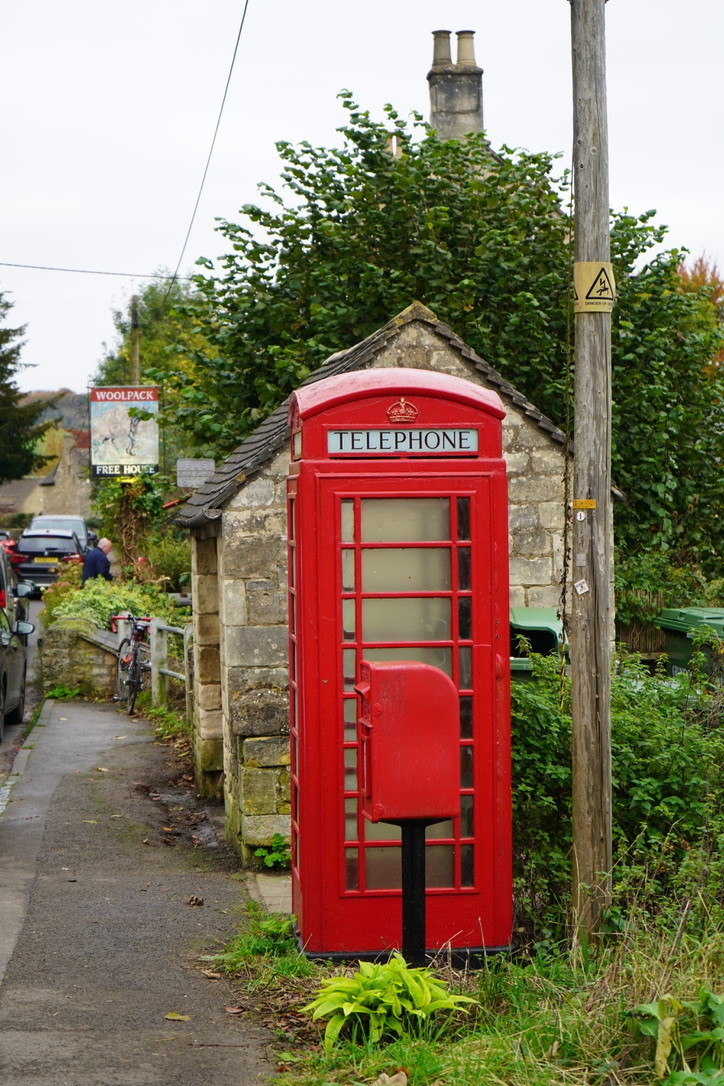
Slad would be our last stop for the day before we lost the sunlight. We’d been driving around the Cotswolds all day, and I was looking forward to this most of all. Our maps programs guided us to Stroud, which is a good-sized city, and then suddenly, we were in Slad.
When Cider With Rosie was written, Slad might as well have been Mars, it was far away from everything. Now, Stroud has basically encroached upon the very borders of Slad (and consequently the village has had to fight off property developers). Still, Slad instantly feels remote the moment you step out of your car. We parked on the street, right by the Woolpack Inn, the pub made famous by Laurie Lee. It was a weekday, so the place was gloriously silent, except for the occasional car down the street.
The weather was cool, and the sun was far over the surrounding hills, creating a grey haze that made it feel properly like Autumn. The main road through Slad runs along the top of a hill through the valley, so when you stand there, you see the Slad valley below you, along with most of the village itself. Along the road is the Woolpack Inn, and further down the lane is the Church. Down below this main road is the village proper, including the cottage made famous by Laurie Lee.
We went for a stroll to look at the village and find the famous cottage. I’m going to be honest here, the walk was not very long because the village is not very big. There’s not much to see, really, other than the landscape that it sits in, and the beautiful cottages that still exist. It feels both like a place out of time, yet also a place where the modern world very much exists - plenty of electrical lines, modern cars, and local workmen going about their day. It’s very much a living, breathing village, a place where people live. It is not stuck in time, like many of these places can be.
We spotted Rosebank Cottage, which is nestled privately below the main village street. Despite being one of the most famous cottages in Britain, it’s a private home, so visitors are encouraged to treat it as such (so I didn’t take a picture). I could instantly picture the young Laurie Lee and his sisters playing and having adventures in the land surrounding the cottage. What a childhood that must have been!
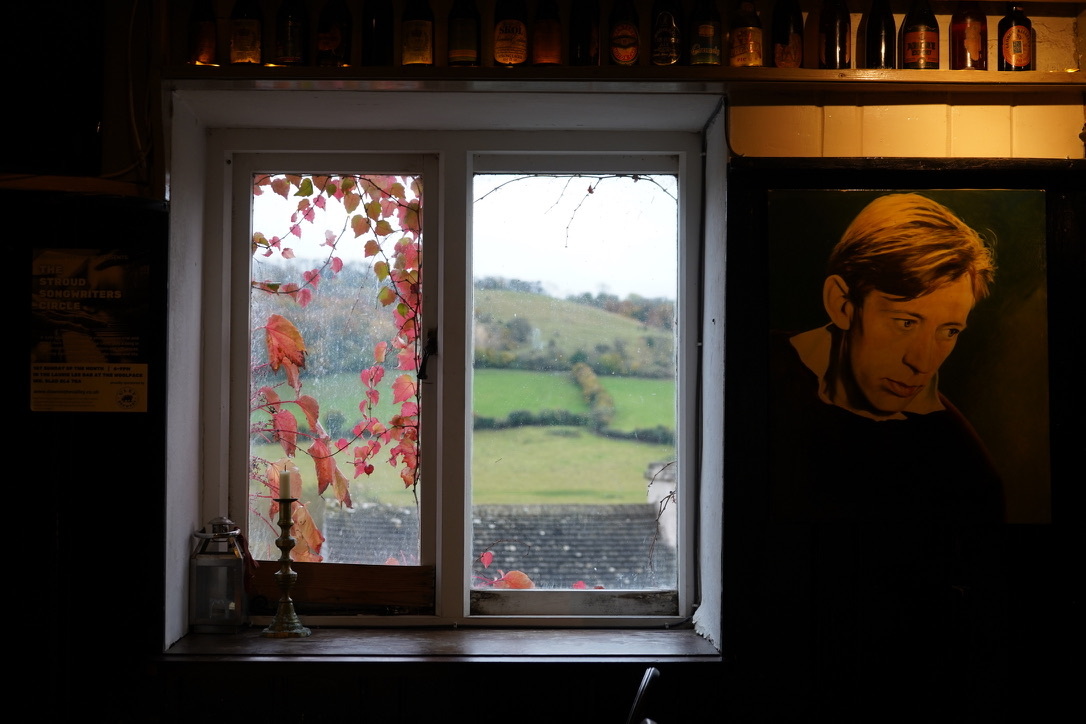
After our stroll, we resolved to have a drink in the Woolpack, which is very much a traditional English pub. It was where Laurie Lee would drink almost every day when he retired to Slad. The pub itself has become a shrine of sorts to its favorite son. There are pictures, book covers, and other paraphernalia of Laurie Lee’s life all over the pub. The staff at the bar were happy to answer questions for these tired and bleary eyed Americans. The pub is pretty much the only economic activity in the town and the center of village life. There’s even a red phone box standing outside to complete the perfection of the village scene (though, that phone box wouldn’t have been there when Laurie Lee was a child).
The Slad Valley has faced numerous challenges from property developers in recent years, with local residents fighting to preserve the landscape that Laurie Lee made famous. A particularly significant battle occurred in 2013-2014 when developers proposed building 112 houses on fields above the village. The local community, backed by the Campaign to Protect Rural England (CPRE) and other conservation groups, mounted a fierce resistance to protect what they saw as both an important literary landscape and a vital piece of natural heritage.
Laurie Lee's daughter Jessy played a key role in the campaign, arguing that the development would irreversibly damage the character of the valley her father immortalized in Cider with Rosie. The campaign was ultimately successful, with the planning inspector ruling against the development in 2014, citing the valley's special character and cultural significance. The Slad Valley Action Group continues to be vigilant against new development proposals, working to ensure that the steep-sided valley, with its patchwork of fields, ancient woodlands, and traditional stone cottages, remains much as Lee described it in his beloved memoir. There are places in England that aren’t so lucky to have such an important literary heritage and a group of people willing to fight for it.
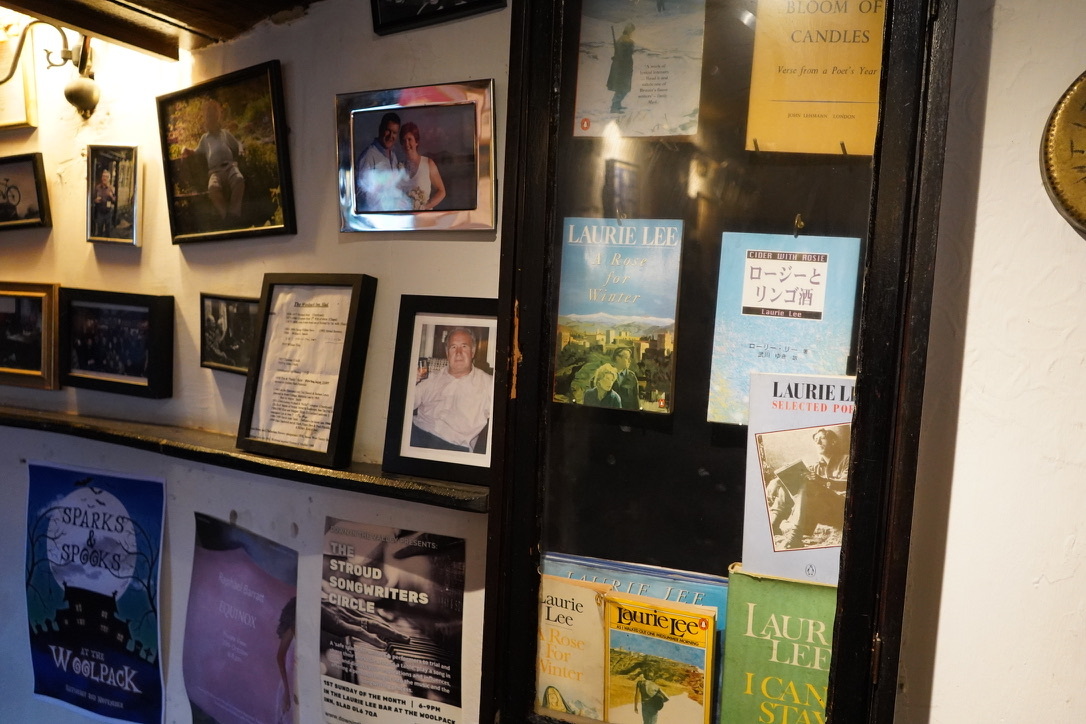
During our visit, there were plenty of locals in the main pub room having a ‘chin wag.’ We ordered drinks and sat down in the next room, surrounded by Laurie Lee ephemera. I don’t drink, so I just had a soda, Mrs. Anglotopia had a warm cider. It was quite something to be in the famous pub. Our moment was only moderately interrupted by a loud local, who after hearing our accents before we sat down, decided to share his opinions on the state of the world loud enough so we could hear to his mates. Even deep in the rural Slad Valley, we couldn’t escape the problems of the world.
Which I suppose is a metaphor for “Cider with Rosie,” Laurie Lee, and the attention his work has brought to this place. It exists as a paragon of traditional Englishness, a guiding beacon for what it means to live in Rural England. But that very attention has a tendency to pollute such a place. So many people want to live in a place like Slad, a rural English idyll, but all our conceptions of a rural English village don’t really exist anymore. And Cider With Rosie is partly responsible for that. The local villagers have had to fight tooth and nail to keep what character their village has left.
Still, it’s a really lovely place, even if it must be a part of the world, however unwillingly.
We finished our drinks and left the opinionated local to have his opinions, unconcerned that it wasn’t really about us. It’s not our fault the world is the way it is currently, we’re just trying to live through it like everyone else. We returned to our car, I looked one last time at the beautiful valley and I hoped that I would get to return there one day. It’s a special place and it was a privilege to visit. We hit the road and returned to our hotel at Thornbury Castle.
Laurie Lee, who spent a large part of his adult life away from Slad, returned in retirement and continued to live in Slad until his death in 1997, often drinking at the Woolpack Inn. His grave in the Slad churchyard overlooks the valley he made famous, marked with the inscription "He lies in the valley he loved."
I can see why he loved the place. It is beautiful.
1 like
Post a reply